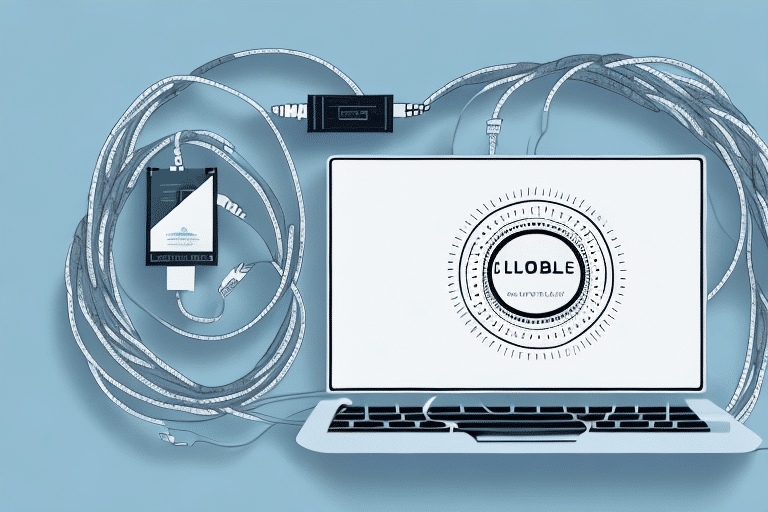How to Connect, Optimize, and Manage UDS for Label Printers
Efficient label printing is crucial for businesses that rely on accurate and timely labeling for their products. A key component of this efficiency is the seamless connection and management of label printers within a network. Universal Data Stream (UDS) serves as a protocol that facilitates this connection, enhancing the overall printing process. This article delves into the fundamentals of UDS, its advantages, various types, and guidelines for selecting the appropriate UDS for your label printer.
Understanding the Basics of UDS for Label Printers
Universal Data Stream (UDS) is a network protocol designed to enable seamless communication between multiple label printers. It allows these printers to share information and exchange control signals, ensuring coordinated and efficient label printing across the network.
Key Functions of UDS
- Printer Discovery: Automatically identifies and registers new printers within the network.
- Device Configuration: Manages the settings and configurations of each connected printer.
- Print Job Management: Distributes and prioritizes print jobs to optimize performance.
By managing the flow of data among all connected printers, UDS minimizes downtime and maximizes productivity. Additionally, UDS supports scalability, allowing businesses to expand their label printing operations without significant investments in additional hardware or software. Security is another critical feature, with built-in encryption and authentication mechanisms safeguarding sensitive data from unauthorized access.
The Benefits of Using UDS for Label Printers
Implementing UDS for label printers offers numerous advantages that enhance operational efficiency and reduce costs:
Increased Efficiency and Productivity
UDS reduces downtime by ensuring continuous printer operation and optimizes printing resources, leading to higher productivity levels. According to a study by Forrester Research, businesses that implement centralized print management solutions like UDS can see a productivity increase of up to 20%.
Cost Savings
By minimizing downtime and optimizing printer performance, UDS helps lower printing costs and extend the lifespan of label printers. Efficient management reduces the need for frequent repairs and replacements, contributing to significant cost savings over time.
Improved Printing Quality
UDS prioritizes printing tasks across the network, ensuring consistent high-quality prints. This reliability is essential for maintaining product standards and brand reputation.
Enhanced Security
With UDS, businesses can control access to printers, restricting usage to authorized personnel only. This feature protects sensitive information from being printed or accessed by unauthorized individuals, aligning with data protection regulations.
Choosing the Right UDS for Your Label Printer
Selecting the appropriate UDS protocol is crucial for optimizing your label printing operations. Consider the following factors when making your choice:
Compatibility
Ensure that the UDS protocol is compatible with your label printer's firmware and software. Refer to the manufacturer's specifications to verify compatibility.
Network Size
The size of your network and the number of connected printers will influence the type of UDS connection required. Larger networks may require more robust protocols to handle increased data flow effectively.
Security
Choose a UDS protocol that offers strong security features, including encryption and authentication, to protect against cyber threats. Refer to standards such as the ISO/IEC 27001 for best practices in information security.
Scalability
Consider the future growth of your business. Select a UDS that can accommodate the addition of more printers without compromising performance or security.
Additionally, assess the speed and reliability of the UDS connection. A fast and stable connection ensures efficient printing and reduces the likelihood of interruptions.
Setting Up Your UDS Connection for Optimal Performance
Proper setup of your UDS connection is essential for achieving optimal printing performance. Follow these best practices to ensure a smooth setup:
- Keep all devices updated with the latest firmware and drivers.
- Configure printer settings to leverage their full capabilities.
- Use high-quality networking equipment, such as cables and routers, to enhance speed and reliability.
Optimal Printer Placement
Position your printers in a central location, away from obstructions, to maintain a strong and stable connection. Minimizing the distance between printers and the router can significantly improve connection speed and reliability.
Optimizing Your Label Printer with UDS: Tips and Tricks
Once your UDS connection is established, further optimization can enhance printing quality and efficiency:
- Use high-quality labels and paper to ensure clear and durable prints.
- Maintain accurate label alignment to prevent printing errors and reduce waste.
- Adjust printer settings to match the specific label type, size, and resolution requirements.
- Regularly clean and maintain your printer to prolong its lifespan and maintain consistent performance.
Software Considerations
Utilize reliable label design software that offers customization options and integrates seamlessly with UDS. Implementing label management software can streamline the printing process, manage inventory, and track usage and costs efficiently.
Troubleshooting Common UDS Connection Issues
Despite careful setup, UDS connections can encounter issues. Common problems include:
- Network Errors: Verify network connectivity and check for possible interferences that may disrupt the connection.
- Connection Timeouts: High network traffic can cause printers to disconnect. Monitor network load and adjust settings as needed.
- Print Spooler Errors: Ensure sufficient hard drive space to handle print jobs and prevent spooler malfunctions.
To resolve these issues, restart your printer and computer. If problems persist, contact your UDS provider's technical support for specialized assistance.
Addressing Driver Issues
Outdated drivers can lead to connectivity problems. Regularly update printer and computer drivers by visiting the manufacturer's website or using your operating system's device manager.
Managing Wireless Connectivity
Interference from other wireless devices can affect UDS connectivity. Consider moving your printers closer to the wireless router or switching to a wired connection for improved stability.
Best Practices for Managing Your UDS Connection
Effective management of your UDS connection is vital for maintaining optimal printer performance and longevity:
- Conduct regular diagnostics on your network and printers to identify and address potential issues early.
- Maintain up-to-date backups of your printing data and software to prevent data loss.
- Monitor printer usage and activity to anticipate and mitigate potential problems.
- Keep firmware and software updated to benefit from the latest features and security enhancements.
Regular Maintenance
Incorporate routine cleaning into your maintenance schedule. Use a soft, lint-free cloth with a mild cleaning solution to clean the printer's exterior and interior, avoiding harsh chemicals that could cause damage.
How to Monitor and Analyze Your Label Printer Performance with UDS
UDS offers various tools to monitor and analyze printer performance effectively:
- Printer Status Updates: Real-time monitoring of printer performance through computer or mobile devices.
- Error Alerts: Receive notifications via email or SMS when errors occur, enabling prompt resolution.
- Data Reporting: Generate detailed reports to track printer metrics and performance trends over time.
Predictive Maintenance
Advanced UDS features like predictive maintenance utilize machine learning algorithms to analyze performance data and predict maintenance needs. This proactive approach helps prevent significant issues and reduces costly downtime.
According to a report by Gartner, businesses implementing predictive maintenance solutions can reduce maintenance costs by up to 30%.
Integrating UDS with Other Label Printing Software and Systems
Integrating UDS with additional label printing software and systems can further enhance productivity and efficiency:
- Cloud-based management systems for centralized control.
- Advanced label design software for customized and automated label creation.
- Synchronization with inventory and order management systems to automate label printing based on real-time data.
Automation and Customization
Automation through integration allows for the seamless initiation of print jobs based on specific triggers, such as new orders or inventory changes. Customization options enable businesses to design labels that incorporate branding elements, product details, and regulatory information, ensuring consistency and compliance across all products.
For more information on integrating label printing systems, refer to the ISO 9001 Quality Management Standards.
Maximizing Efficiency and Cost Savings with UDS for Label Printers
The ultimate goal of implementing UDS is to maximize efficiency and achieve cost savings. Focus on the following areas to reach this objective:
- Regularly monitor and optimize printer performance to maintain high efficiency.
- Ensure printers operate at optimal capacity to prevent unnecessary downtime.
- Keep software and firmware updated to leverage the latest efficiency improvements.
- Partner with a reputable UDS provider that offers robust technical support and expertise.
Environmental Impact
UDS contributes to sustainability by reducing paper waste and minimizing energy consumption. Efficient printing processes align with corporate sustainability goals and can enhance a company's environmental responsibility profile.
Future Developments in UDS Technology for Label Printers
UDS technology is rapidly evolving, with anticipated advancements poised to further enhance label printing:
- Enhanced Compatibility: Improved integration with a broader range of label printing software and systems.
- Advanced Monitoring Tools: More sophisticated tools for instant issue identification and resolution.
- Enhanced Security Features: Strengthened security measures to protect against emerging cyber threats.
Integration with Artificial Intelligence
Future UDS developments may incorporate artificial intelligence and machine learning to optimize printer performance automatically and reduce downtime through predictive analytics.
Mobile Management Capabilities
Enhanced mobile functionalities will allow for remote management and monitoring of label printers via smartphones and tablets, providing greater flexibility and control.
User Interface Improvements
Improvements in user interfaces and dashboards will make navigation and customization of printer settings more intuitive, enhancing user experience and operational efficiency.
As UDS technology continues to advance, businesses must stay informed about the latest developments to maintain optimal printer performance and security. Regularly updating systems and adopting new features will ensure that label printing operations remain efficient, secure, and aligned with industry best practices.








